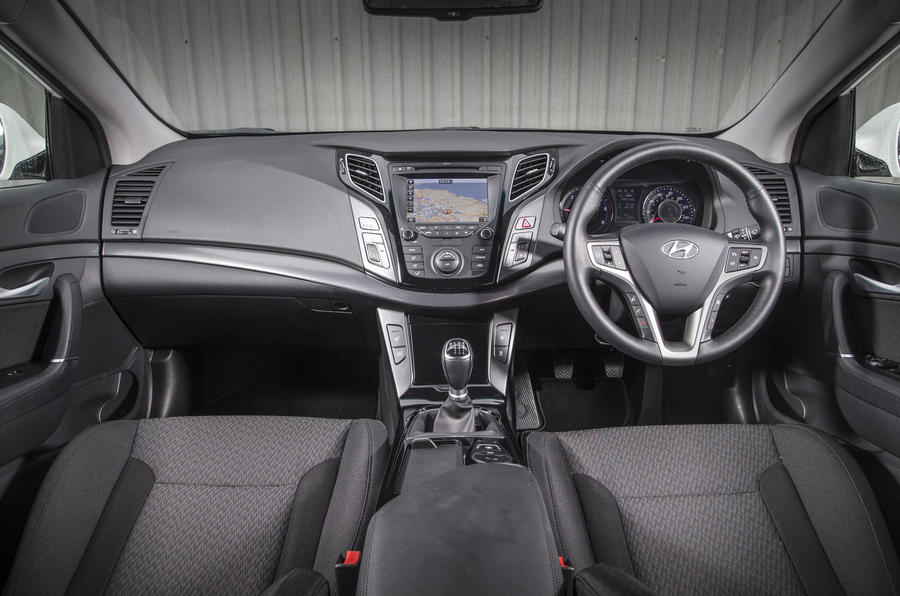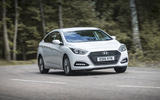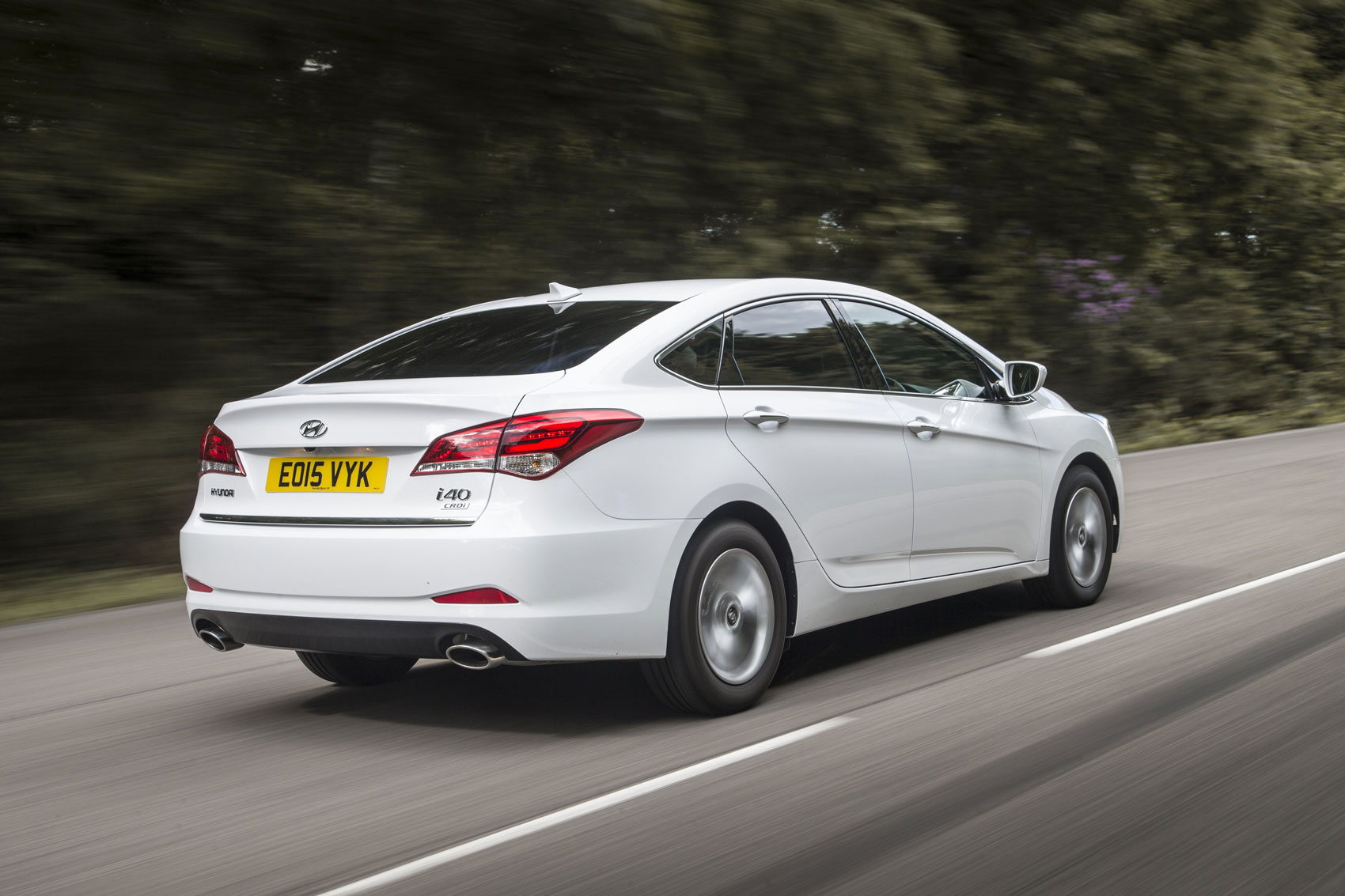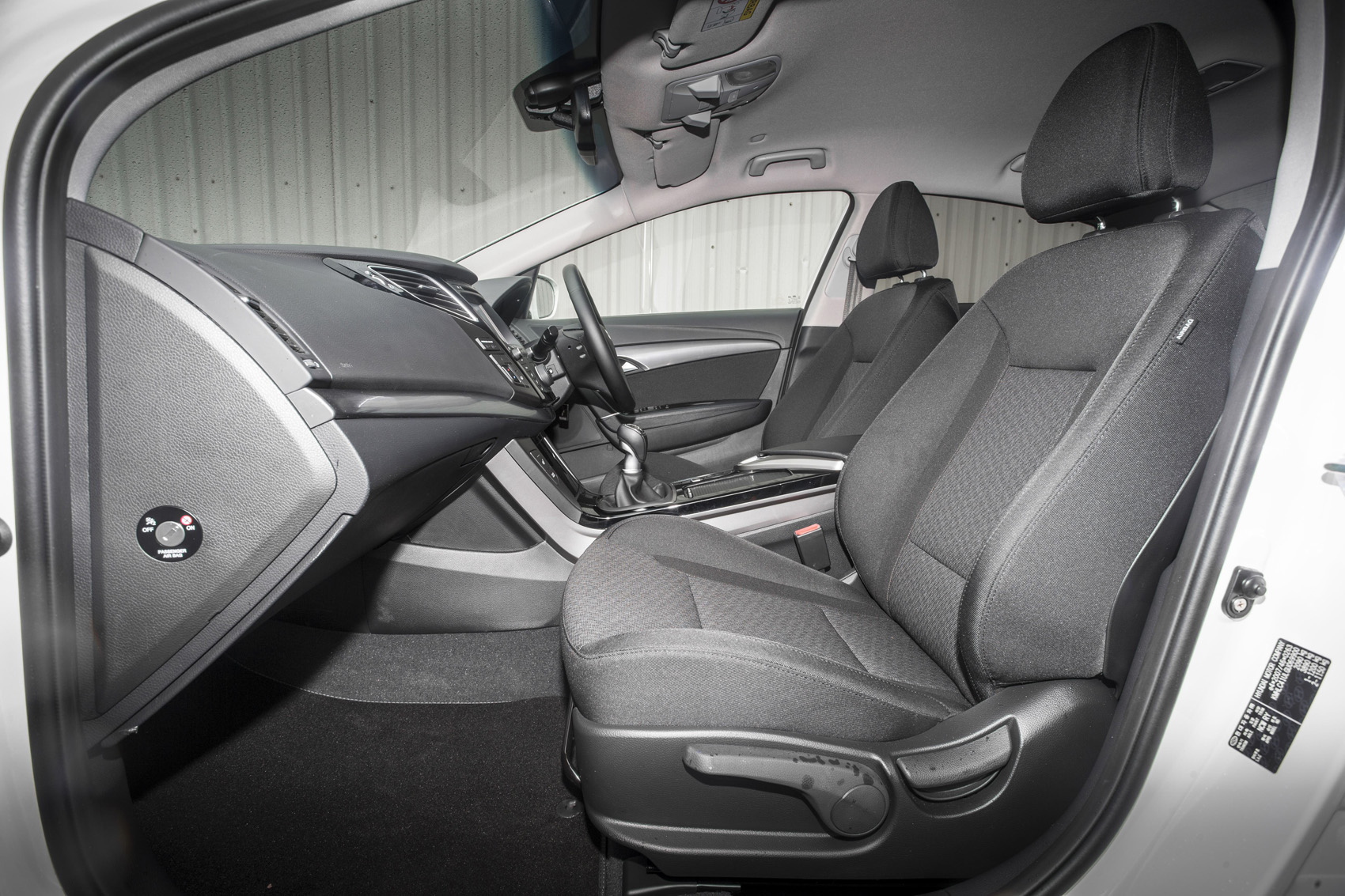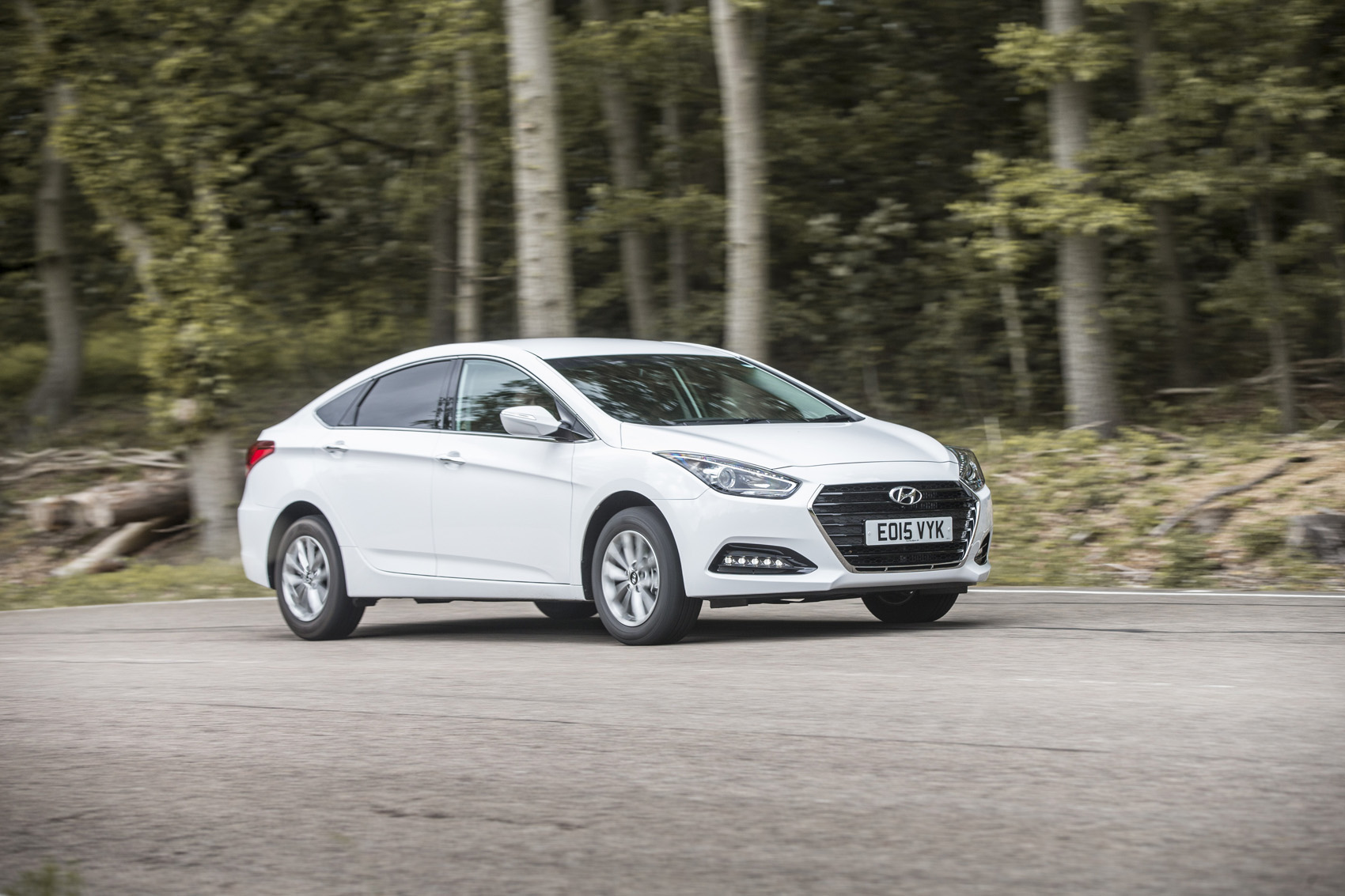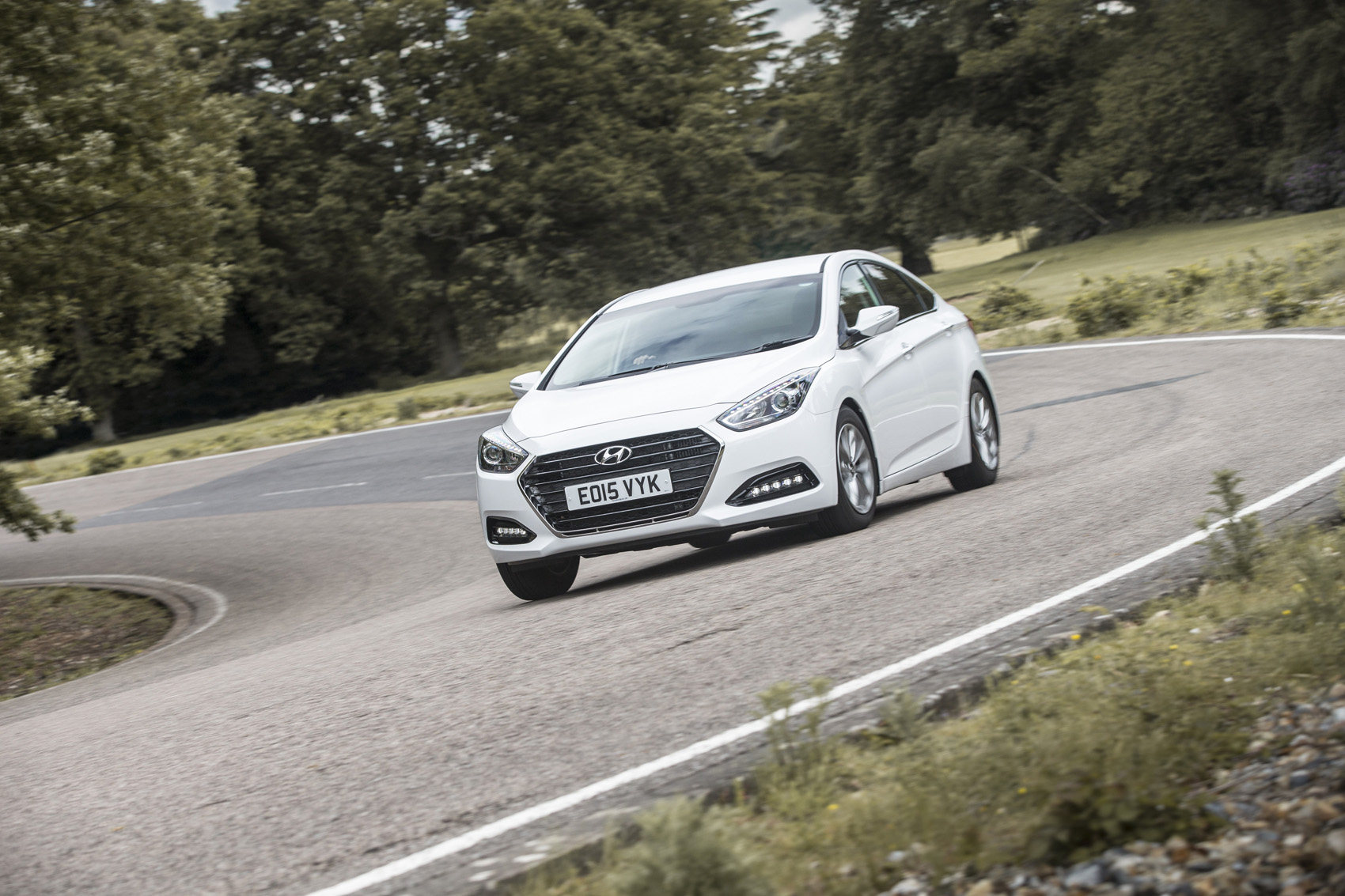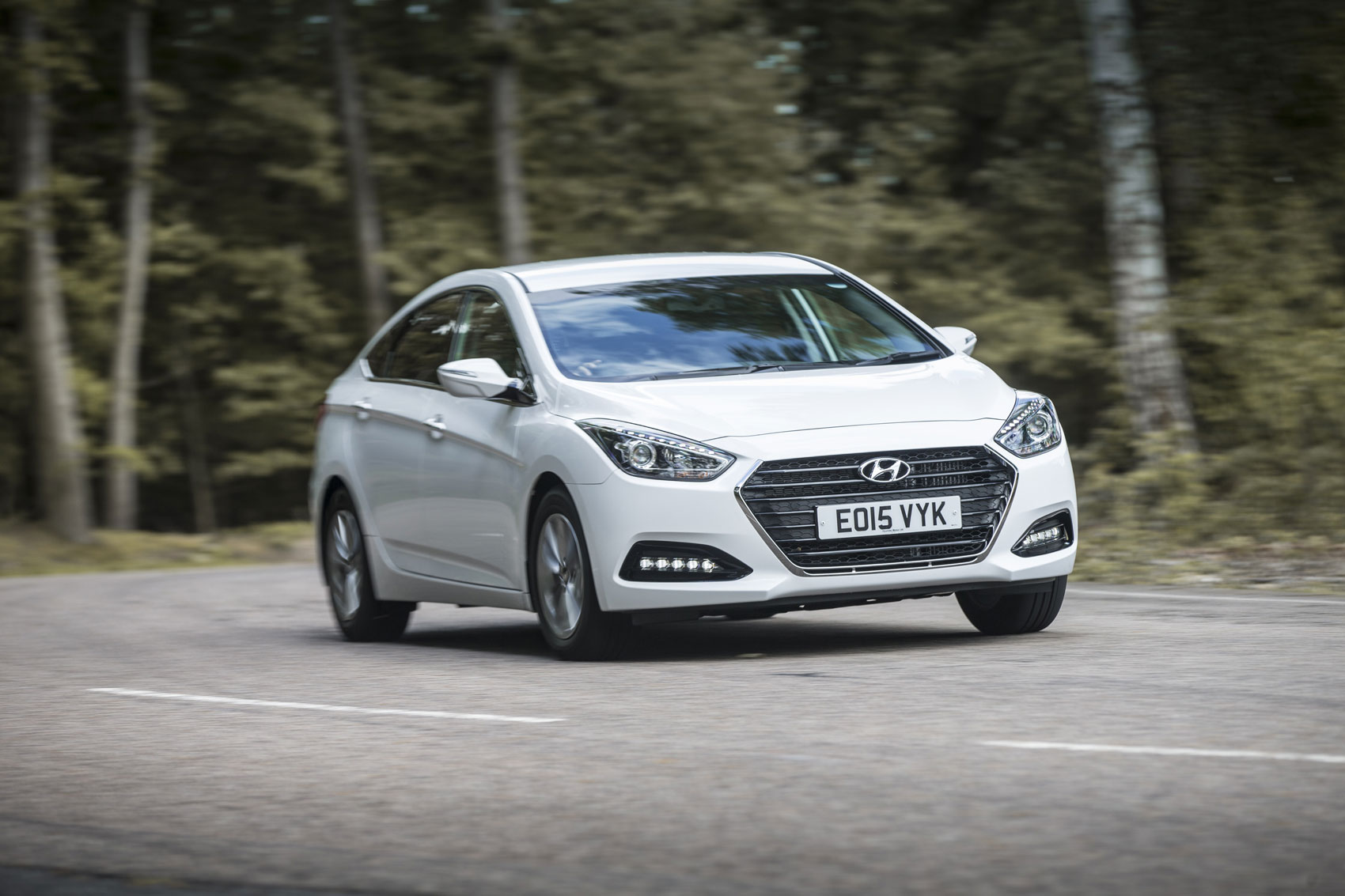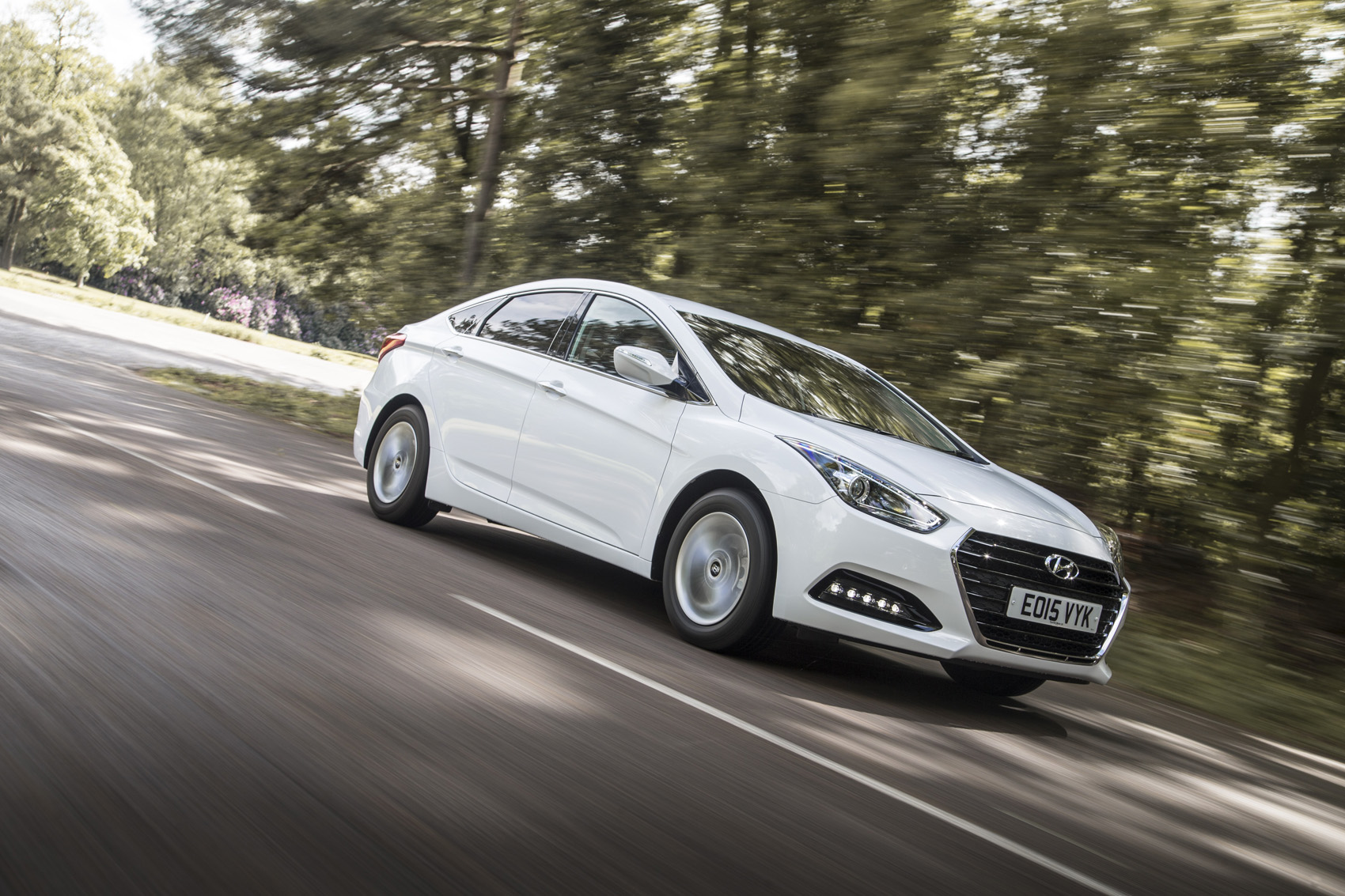Hyundai clearly understands what most families want from an affordable everyday holdall. In the i40, it has delivered a roomy car made of robust materials and fitted with plenty of standard equipment.
This cabin is appealing, and not at all budget-flavoured. It's also comfortable, simple and easy to live with. Hyundai claims that you’ll find more shoulder space and headroom in the front seats of an i40 than you will in a Ford Mondeo.
To our testers the car felt slightly smaller than that suggests, the driver’s seat in particular seeming a little too high-set for the very tall. But apart from that, the car’s primary ergonomics are faultless, with plenty of reach and rake adjustment on the steering column and three well positioned pedals.
There’s also more than enough room for adults to travel in the rear in comfort. The rear backrests recline through several positions, while maximum legroom is 10mm greater than that of an Insignia, with 70mm more as a minimum.
The car’s centre stack of heater and entertainment controls is surrounded by glossy black trim, as is the centre console, which lends some richness to the cabin ambience. The positioning and functionality of the main rotary menu controller, the design of its slanted air vents and the shape of its dished steering wheel will make any Honda Accord owner feel at home. Although the cabin’s basic design might lack a bit of originality, there’s nothing wrong with its execution.
As a load-carrier, the i40 Tourer measures up favourably, too. As standard, it comes with a useful cargo net that fits together with the tonneau cover and would prevent high-up items from sliding forwards towards the heads of rear passengers under hard braking.
The boot has a low load lip and with all five seats in place it holds 553 litres, which is more than a Mondeo. Load space expands to 1719 litres with the seats folded almost, but not quite, flat. Only the Volkswagen Passat, Skoda Superb, Mazda 6 and Mondeo swallow more.
Saloon versions are spacious too, with 525 litres of storage capacity even with the seats up.
On the equipment fronts, there are four to choose from - S, SE Nav, SE Nav Business and Premium. The entry-level S models get 16in alloys, air conditioning, heated door mirrors, and Bluetooth and USB connectivity as standard, while upgrading adds parking sensors, DAB radio, sat nav, reversing camera and heated front seats to the package.
The fleet-friendly SE Nav Business trim adds an electrically adjustable driver's seat, lumbar support for the passenger, leather seat upholstery, dual-zone climate control, and keyless entry and start. The range-topping Premium models gain luxuries such as lane departure warning, a panoramic sunroof and ventilated front seats.











